Learning how to cast a fishing rod is one of the most essential skills for any angler. Whether you’re fishing from the shore, a boat, or a dock, a proper cast determines where your bait lands and how natural it appears to fish. A smooth, accurate cast increases your chances of catching fish while reducing tangles and frustration. Many beginners struggle at first, but with practice and the right technique, casting becomes second nature. The process involves coordination, timing, and understanding your gear. In this article, we’ll break down how to cast a fishing rod clearly and thoroughly. We’ll cover different casting methods, fishing rod casting tips for accuracy, gear selection, and drills to improve your form. No matter your experience level, mastering how to cast a fishing rod is the foundation of a successful and enjoyable fishing adventure.
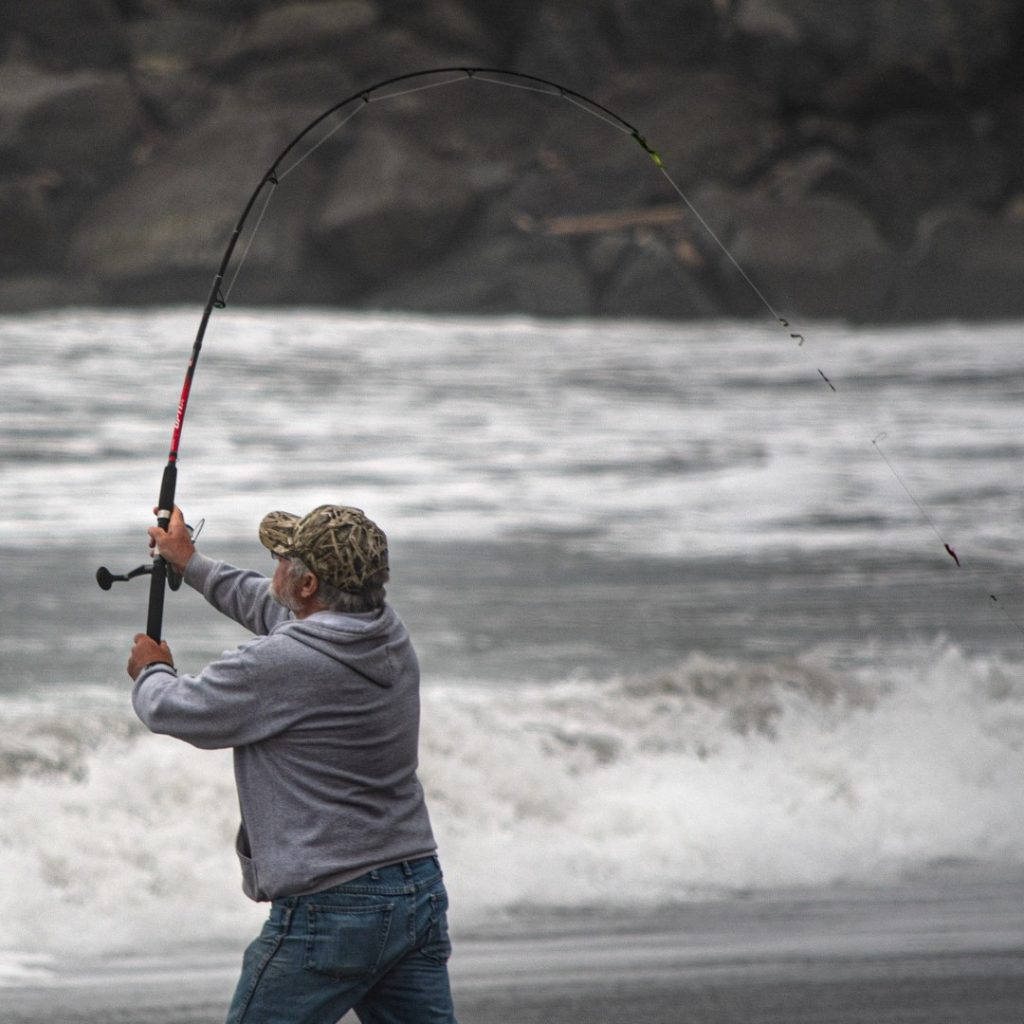 Understanding the Basics of Fishing Rods
Understanding the Basics of Fishing Rods
To cast a fishing rod effectively, you must first understand its basics. Knowing the different types and parts of fishing rods will help you select the best one for your needs. Let’s explore the essentials.
Types of Fishing Rods and Their Uses
Fishing rods come in various types, each designed for specific fishing techniques. Common types include:
- Spinning rods: Ideal for beginners and light casting techniques.
- Casting rods: Suitable for targeting larger fish using heavier baits.
- Fly rods: Perfect for fly-fishing in streams or rivers.
- Telescopic rods: Compact rods that are easy to transport.
Each rod serves a unique purpose, so choose one based on your fishing goals.
Parts of a Fishing Rod Explained
Understanding the parts of a fishing rod will help you use it more effectively. Key components include:
- Handle: The section you grip while casting and reeling.
- Reel seat: The part where the reel is attached.
- Guides: Rings that guide the fishing line along the rod.
- Blank: The main body of the rod, providing flexibility and strength.
- Tip: The top end that bends the most when under pressure.
Familiarize yourself with these parts to handle and maintain your rod better.
Preparing Your Fishing Rod
Getting your fishing rod ready is an essential step for a successful fishing experience. Follow these simple instructions to prepare your rod effectively.
Choosing the Right Fishing Line
The fishing line is critical for casting and reeling in fish. Here’s how to pick the right one:
- Match the line to the rod and reel: Check the rod’s specifications for recommended line weight.
- Select the line type based on fishing style: Monofilament, fluorocarbon, or braided line offer different advantages.
- Monofilament: Great for beginners; stretches easily.
- Fluorocarbon: Strong and nearly invisible underwater.
- Braided: Tough and ideal for heavy-duty fishing.
- Consider water conditions: Use darker lines for murky water and clear lines for clear water.
- Choose the correct test strength: Ensure the line can handle the weight of the targeted fish.
By choosing the right line, you’ll ensure smoother casting and enhanced performance while fishing.
Attaching Bait or Lures Properly
Attaching bait or lures correctly increases your chance of catching fish. Follow these steps:
- Pick suitable bait or lures: Match your selection to the type of fish you aim to catch.
- Tie secure knots: Use a strong knot like the Fisherman’s knot or Palomar knot to prevent slipping.
- Position bait or lures accurately: Make sure they are secure and dangle freely for realistic movement.
- Inspect the setup: Check the attachment to ensure it’s snug and ready for casting.
Proper attachment helps present your bait or lure effectively, attracting fish more efficiently.
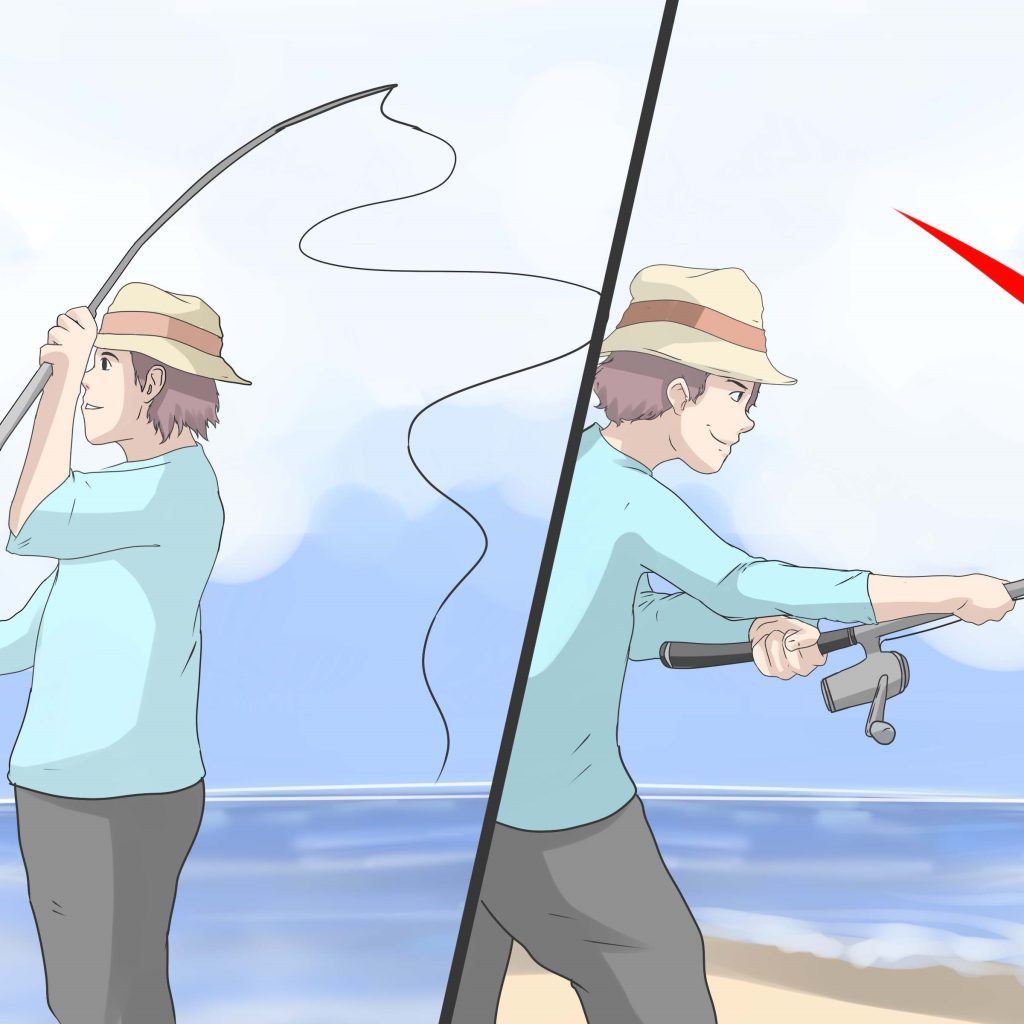 Techniques for Casting a Fishing Rod
Techniques for Casting a Fishing Rod
Mastering casting techniques is essential for fishing success. Learn different methods to improve your accuracy and efficiency.
Overhead Cast: A Beginner-Friendly Approach
The overhead cast is ideal for newcomers and general fishing scenarios. Follow these steps:
- Grip the rod firmly: Ensure a steady hold for better control.
- Position yourself: Face your target with feet shoulder-width apart.
- Raise the rod: Lift it overhead while keeping the line taut.
- Swing and release: Flick the rod forward and release the line when it reaches the forward point.
- Watch your cast: Observe where your lure lands and adjust your aim as needed.
This technique is simple and effective for most fishing styles.
Sidearm Cast: Enhancing Precision
The sidearm cast is perfect for precise placement near obstacles like docks or vegetation. Steps include:
- Maintain grip and stance: Hold the rod firmly and stand comfortably.
- Lower the rod: Position the rod parallel to the ground.
- Swing sideways: Move the rod sideways in a smooth motion.
- Release on the forward swing: Let the line go mid-swing for accurate placement.
- Practice control: Adjust the angle for better precision near specific spots.
Use the sidearm cast for tight and tricky fishing areas.
Flipping and Pitching for Short-Distance Casting
These methods are ideal for casting short distances and targeting close-range fish. Here’s how:
Flipping:
- Feed some line: Pull the line using your free hand.
- Swing the bait gently: Swing the bait out with a controlled motion.
- Lower the rod tip: Allow the bait to softly land in water.
Pitching:
- Hold the lure: Pinch the lure near the hook.
- Swing the bait underhand: Flick it forward with an underhand motion.
- Minimize splash: Ensure a smooth landing to prevent scaring fish.
Both techniques are useful for shallow water and confined spaces, requiring less force and more finesse.
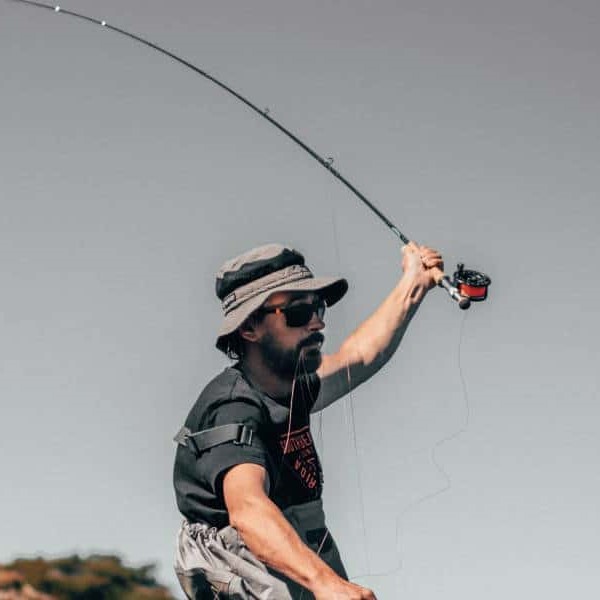 Common Mistakes to Avoid While Casting
Common Mistakes to Avoid While Casting
Learning how to cast a fishing rod requires practice and attention to technique. Avoiding common mistakes can significantly enhance your fishing success. Here are some frequent errors and how to prevent them.
Applying Too Much Force
Using excessive force while casting is a common beginner mistake. It reduces accuracy and control.
- Focus on fluid motion: Smooth, controlled movements result in better casts.
- Avoid overloading the rod: Too much power can stress the rod, leading to breakage.
- Let the rod do the work: Rely on its flexibility instead of brute strength.
- Practice regularly: Build muscle memory without exerting unnecessary force.
A gentle, balanced cast is always more effective than an overly forceful one.
Incorrect Grip or Hand Position
Improper grip or hand placement can disrupt casting precision and comfort. Correct positioning is key.
- Hold the rod firmly but not tightly: Grip should be secure yet relaxed.
- Position hands correctly: Place one hand on the handle and the other on the reel.
- Maintain alignment: Ensure a straight line between the rod, reel, and your target.
- Adjust grip as needed: Adapt for different casting styles or rod types.
A proper grip increases control and prevents hand fatigue during long fishing sessions.
Neglecting to Check the Line
Ignoring the line’s condition can lead to tangles, snags, or weak casting performance.
- Inspect for knots or damage: Ensure the line is smooth and free of flaws.
- Untangle any loops: Remove twists and loops before starting.
- Test the spool tension: Adjust it to ensure a smooth release during casting.
- Check before every cast: Stay vigilant to avoid issues mid-fishing.
Regular checks ensure a seamless casting experience and reduce downtime due to repairs.
Tips for Improving Your Casting Accuracy
Improving casting accuracy can greatly enhance your fishing success. Practice and technique adjustments are key.
Practicing with Lightweight Lures
Using lightweight lures helps refine casting control and precision. Here’s how to practice effectively:
- Start with small targets: Use hoops or markers to practice landing the lure precisely.
- Focus on short distances: Gradually increase distance as accuracy improves.
- Develop a smooth motion: Avoid jerky movements to maintain better control.
- Repeat specific techniques: Practice overhead, sidearm, or underhand casts with consistent effort.
- Track your progress: Note improvements and areas needing more work.
Lightweight lures reduce strain and allow smooth learning curves for beginners.
Adjusting for Wind and Weather Conditions
External factors like wind can affect casting. Adapt to perform better in varying conditions:
- Cast against the wind at an angle: Prevents the line from drifting too far.
- Use heavier lures: They are less affected by windy conditions.
- Shorten your casts: Improve control and accuracy when dealing with strong winds.
- Position yourself strategically: Find spots shielded from direct wind.
- Be mindful of rain: Wet lines may behave differently; adjust reel settings accordingly.
Anticipating weather conditions ensures consistent results and fewer missed casts.
Enhancing Coordination and Timing
Coordination and timing are essential for precise casting. Improve these skills with the following tips:
- Match rod movement with lure release: Develop coordination between hand motion and line release.
- Practice syncing both hands: Balance the reel and rod hand for better technique.
- Use a metronome or rhythm tool: Maintain a consistent casting pace.
- Pay attention to lure trajectory: Observe and adjust based on where it lands.
- Refine muscle memory: Repeated practice locks in effective motion patterns.
Better timing and coordination lead to smooth, accurate casts every time.
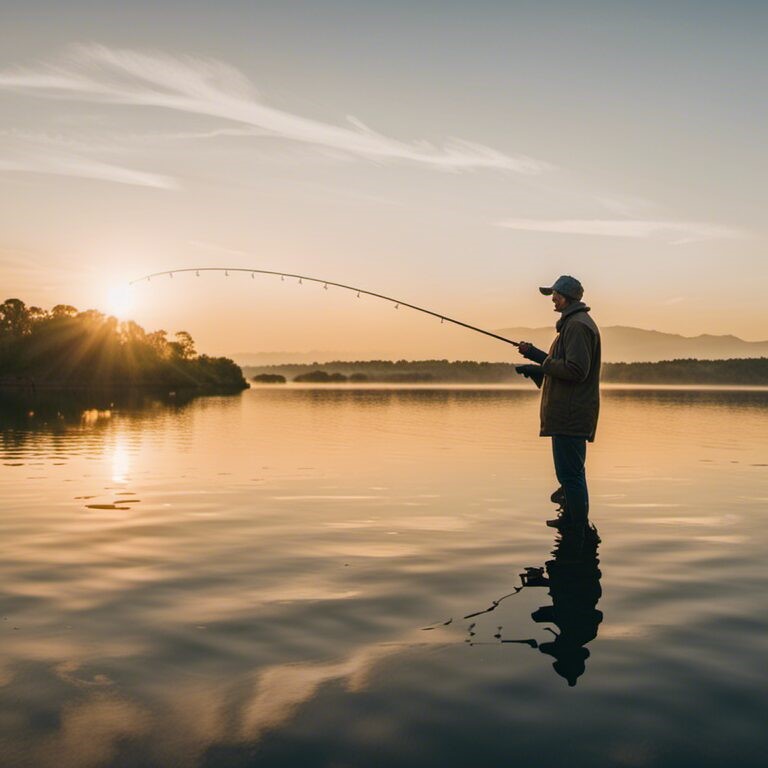 Troubleshooting Casting Challenges
Troubleshooting Casting Challenges
Casting challenges can frustrate even experienced anglers. Knowing how to troubleshoot common issues is crucial. Follow these tips to address frequent problems effectively.
Resolving Line Tangling Issues
Line tangling can disrupt your fishing and waste valuable time. Address this problem as follows:
- Inspect your spool regularly: Ensure the line is wound evenly without overlaps or knots.
- Avoid overfilling the spool: Too much line increases the chances of tangles.
- Check for twists: Run the line through your fingers to straighten any twists.
- Use the right casting technique: Jerky casts often lead to tangles. Keep your movements smooth and steady.
- Match the line to your reel: Ensure line weight is compatible with your reel’s specifications.
Preventive care and proper technique will minimize tangling during your fishing trips.
Fixing Snags and Backlashes
Snags and backlashes can damage your line and waste precious fishing time. Fix these issues effectively:
- Keep your finger on the spool: Control the line’s release to reduce the risk of backlashes.
- Release line tension gently: Use slow, consistent pressure to free snags.
- Use a quality reel with adjustable settings: A properly tuned reel can prevent backlashes.
- Check for obstacles before casting: Avoid areas with underwater plants or debris.
- Rewind the line carefully: Ensure it’s smooth and untangled before your next cast.
Practicing patience and proper handling is key to resolving these issues.
Adjusting Reel Settings
Reel settings affect casting accuracy and ease. Adjusting them properly ensures smoother performance.
- Set the drag correctly: Adjust it according to the line type and target fish size.
- Fine-tune spool tension: Proper tension prevents the line from unwinding too quickly or getting stuck.
- Inspect the brake system: Ensure it is functioning smoothly for controlled casts.
- Adapt to changing conditions: Adjust settings to wind and lure weight.
- Maintain the reel regularly: Keep it clean and lubricated to avoid mechanical issues.
By properly adjusting reel settings, you can cast with greater confidence and precision.
Maintaining Your Fishing Rod for Better Performance
Proper maintenance ensures a long life and optimal performance of your fishing rod. Regular care and inspection keep your rod in top condition.
Cleaning and Storing the Rod
Cleaning your fishing rod removes dirt and prevents damage. Follow these steps to clean and store it properly:
- Rinse after every use: Use fresh water to remove salt, dirt, and debris. This prevents corrosion.
- Clean the guides and reel seat: Use a soft brush or cloth for thorough cleaning.
- Dry completely: Let the rod air-dry to avoid moisture damage.
- Use rod covers: Protect the rod during transport or storage.
- Store in a cool place: Keep it in a dry, shady area to prevent warping or heat damage.
Proper cleaning and storage significantly extend your fishing rod’s lifespan.
Checking for Wear and Damage
Regular inspection of your rod prevents performance issues. Check these areas frequently:
- Inspect the guides: Look for cracks or bends that could damage your fishing line.
- Examine the reel seat: Ensure it securely holds the reel without wobbling.
- Check the blank: Look for scratches, dents, or signs of weakness along the rod.
- Test the handle grip: Make sure it’s firm and free of wear.
- Replace damaged parts immediately: Use manufacturer-approved components to maintain performance.
Frequent checks ensure your rod is always ready for optimal fishing performance.
Frequently Asked Questions About How to Cast a Fishing Rod
Q: How far should a beginner cast?
Most beginners start at 20–30 feet. Focus on accuracy first. Distance improves with practice.
Q: Why does my line keep tangling?
Tangles often come from poor timing or overfilling the reel. Practice the stop-and-release motion.
Q: Can I cast without a reel?
No, the reel holds and releases the line. It’s essential for all modern casting methods.
Q: What is backlash?
It happens when the spool spins faster than the line leaves the reel. Common in baitcasters.
Q: How do I fix a bird’s nest?
Stop reeling. Gently pull loose strands. Use a toothpick for tight knots. Prevent it by adjusting spool tension.
Q: Should I use a leader?
Yes, in clear water. It reduces visibility and protects against sharp teeth or rocks.
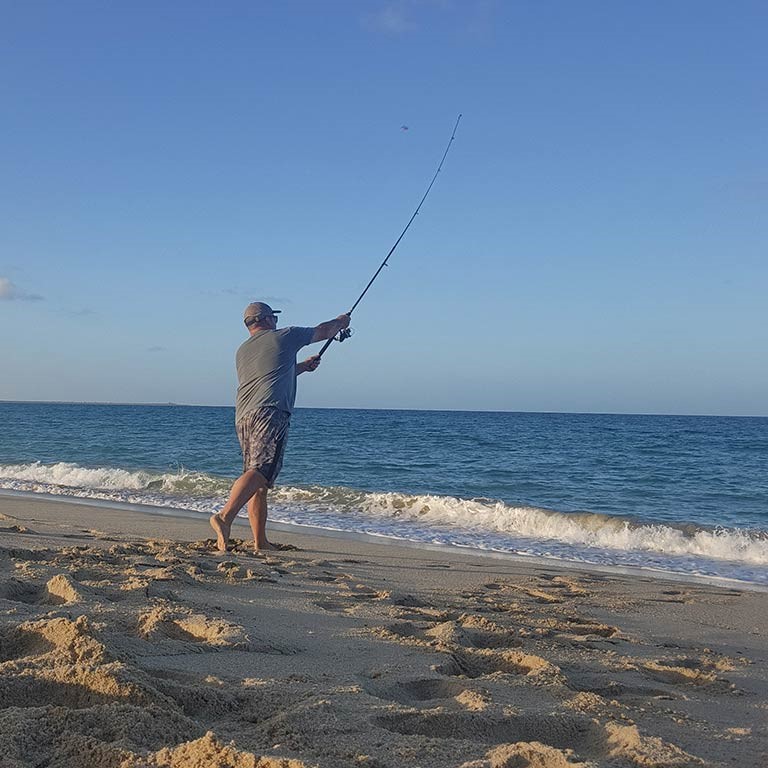 Final Thoughts: Why Mastering How to Cast a Fishing Rod Is Worth the Effort
Final Thoughts: Why Mastering How to Cast a Fishing Rod Is Worth the Effort
How to cast a fishing rod like a pro? Learning how to cast a fishing rod opens the door to a lifetime of outdoor enjoyment. It’s a skill that grows with you. From your first catch to advanced techniques, casting connects you to the rhythm of fishing. It builds confidence, improves accuracy, and increases your success on the water. With the right gear, proper form, and consistent practice, anyone can become a skilled caster. Whether you’re teaching a child or improving your own technique, the process is rewarding. So grab your rod, head to the water, and keep practicing. Mastering how to cast a fishing rod is not just about catching fish—it’s about mastering the art of the sport.